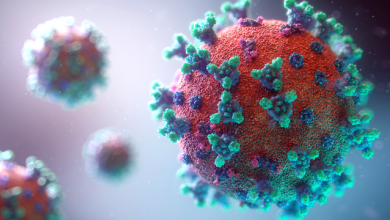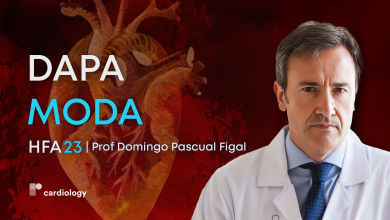Search results
Author(s):
Claudia Agabiti-Rosei
,
Anna Paini
,
Massimo Salvetti
Added:
3 years ago
Uric acid (UA) represents the final product of purine metabolism, in humans mainly regulated by the xanthine-oxidoreductase enzyme, which converts hyoxantine to xanthine and xanthine to UA. Dietary factors may influence serum UA (SUA), increasing its levels (meat, seafood, fructose, alcohol and sodium) or decreasing them (coffee and ascorbic acid). In addition, high cellular turnover conditions,…
View more
Author(s):
Hector M Garcia-Garcia
,
Patrick W Serruys
Added:
3 years ago
To date, cardiologists have alleviated the symptoms of patients with significant lesions in the coronary angiography by stenting or coronary artery bypass grafting. While normal-looking coronary segments in angiography have been regarded as ‘disease-free’ and mild/moderate stenoses as ‘non-treatable’, today that we know that from these non-significantly diseased areas may potentially arise acute…
View more
Author(s):
Rocco Antonio Montone
,
Giulia Iannaccone
,
Maria Chiara Meucci
,
et al
Added:
3 years ago
In December 2019, several cases of interstitial pneumonia of unknown origin were detected in Wuhan, China, and on 9 January 2020, severe acute respiratory syndrome coronavirus 2 (SARS-CoV-2) was identified as the causative agent of coronavirus disease 2019 (COVID-19). Within a few weeks, the contagion spread through China and South Korea, and the outbreak rapidly extended worldwide due to…
View more
Author(s):
Christopher Huggins
,
Nicoletta Charolidi
,
Gillian W Cockerill
Added:
3 years ago
The concentration of plasma low-density lipoprotein cholesterol (LDL-C) is reduced, while that of total high-density lipoprotein cholesterol (HDL-C) is increased, following inhibition of cholesteryl ester transfer protein (CETP). This combined effect has made inhibition of CETP an attractive pharmacological approach for reducing the residual incidence of cardiovascular disease (CVD) remaining…
View more
Author(s):
Jason M Tarkin
,
Juan Carlos Kaski
Added:
3 years ago
Stable angina pectoris is the most prevalent clinical manifestation of coronary heart disease. While the overall prognosis in patients with stable angina is good, with a low yearly event rate of ~1–2 %,1 for many, adequate symptom control can be difficult to achieve, leading to significantly impaired quality of life.
The traditional approach to the pharmacological management of stable angina, as…
View more
Author(s):
Domingo Figal
Added:
11 months ago
ESC-HFA 2023 — Prof Domingo Pascual Figal (Hospital Clinico Universitario Virgen de la Arrixaca, SP) discusses the DAPA MODA study (NCT04707352).
The study aimed to assess the effects of dapagliflozin on cardiac remodeling parameters, particularly LA geometry and function, and biomarkers reflecting pathophysiological pathways. Findings from ESC Heart Failure 2023 revealed that dapagliflozin…
View more
Pulmonary Hypertension
Author(s):
Brendan P Madden
Added:
3 years ago
Article
Author(s):
Adnan Kastrati
Added:
3 years ago
Drug-eluting stents (DES) are the standard percutaneous treatment strategy in patients with coronary artery disease (CAD). Their use has further reduced the incidence of restenosis and repeat revascularisation in single vessel de novo disease. These stents have bioactive coatings that, through a complex mechanism, allow the release of various anti-inflammatory and anti-proliferative drugs at high…
View more
Author(s):
Alexandros Protonotarios
,
Perry Elliott
Added:
3 years ago
Until the 20th century, conventional medicine relied almost exclusively on observable characteristics to classify and treat human disease.1 Even in the modern era, physicians define diseases using phenotypic similarities and employ relatively simple algorithms to interpret diagnostic tools and plan treatment. The advent of low-cost genetic sequencing and its introduction into clinical care…
View more
Author(s):
Marianne Yngen
Added:
3 years ago
Introduction
Diabetes mellitus (DM), characterised by chronic hyperglycaemia, is a rapidly growing worldwide health problem. The prevalence of DM has been estimated at 3% to 5% of Western populations. The incidence of DM is increasing and will more than double within 15 years, mainly due to adverse lifestyle changes with excess caloric intake and reduced physical activity, which in turn will…
View more













 « First
« First